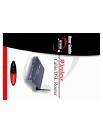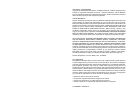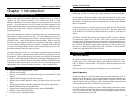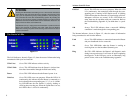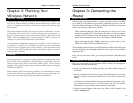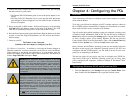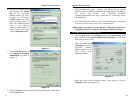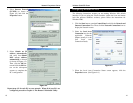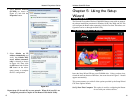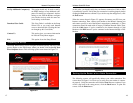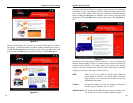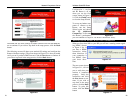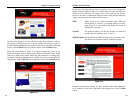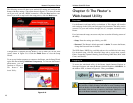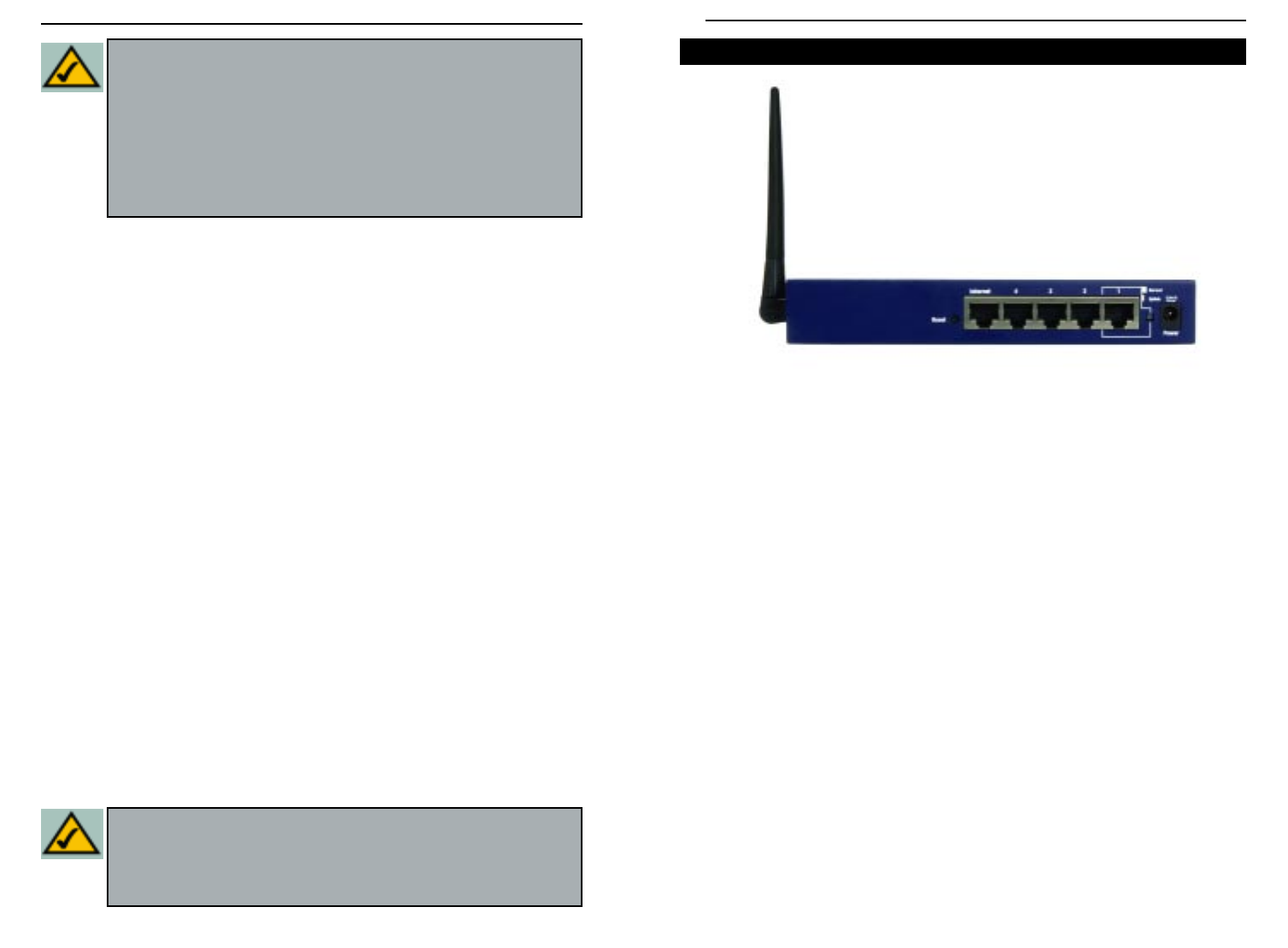
Dynamic IP Addresses
A dynamic IP address is automatically assigned to a device on the network,
such as PCs and print servers. These IP addresses are called “dynamic”
because they are only temporarily assigned to the PC or device. After a certain
time period, they expire and may change. If a PC logs on to the network (or the
Internet) and its dynamic IP address has expired, the DHCP server will assign
it a new dynamic IP address.
For DSL users, many ISPs may require you to log on with a user name and
password to gain access to the Internet. This is called “Point to Point Protocol
over Ethernet” or PPPoE. PPPoE is similar to a dial-up connection but does not
have a phone number to dial into, and PPPoE is a dedicated high-speed con-
nection. PPPoE also will provide the Router with a dynamic IP address to
establish a connection to the Internet.
DHCP (Dynamic Host Configuration Protocol) Servers
DHCP frees you from having to assign IP addresses manually every time a new
user is added to your network. PCs and other network devices using dynamic
IP addressing are assigned a new IP address by a DHCP server. The PC or net-
work device obtaining an IP address is called the DHCP client. The Router’s
Internet port is, by default, set as a DHCP client.
DHCP servers can either be a designated PC on the network or another network
device, such as the Router. By default, a DHCP server is enabled on your
Router’s LAN ports. If you already have a DHCP server running on your net-
work, you must disable one of the two DHCP servers. If you run more than one
DHCP server on your network, you will experience network errors, such as
conflicting IP addresses. To disable the Router’s DHCP function, see the
DHCP section in Chapter 6: The Router’s Web-Based Utility.
NNoottee::
Even if you assign a static IP address to a PC, other PCs can still use
DHCP’s dynamic IP addressing, as long as the static IP is not within the
DHCP range of the LAN IP Address.
If the Router’s DHCP function fails to provide a dynamic IP address for any
reason, please refer to Appendix A: Troubleshooting.
The Router’s rear panel (as shown in Figure 1-1) is where all of its connections
are made.
Internet The Internet Port is where you will connect your cable or
DSL modem with an Ethernet cable. Your modem con-
nection will not work from any other port.
Ports 4, 3, 2 These four LAN (Local Area Network) ports are where
you will connect networked devices, such as PCs, print
servers, and any other Ethernet devices you want to put
on your network. If Port 1 is being used, the Uplink Port
will not work.
Port 1/Uplink Port The Uplink Port is where you can expand your network
by connecting to a switch. Uplinking to a switch is done
by simply running a cable from the Uplink Port to the
other device. The Uplink Port is shared with Port 1.
Pushing in the Uplink button allows this port to be used
as the Uplink port. If the Uplink button is not pushed in,
this port functions the same as Ports 4, 3, and 2.
Power The Power Port is where you will connect the included
AC Power adapter.
Figure 1-1
The Router’s Ports
NNoottee::
Since the Router is a device that connects two networks, it needs two
IP addresses—one for the LAN side, and one for the Internet side. In this
User Guide, you’ll see references to the “Internet IP address” and the “LAN
IP address.”
Since the Router has firewall security (NAT), only the Router’s Internet IP
address can be seen from the Internet.
However, even the Internet IP address can be blocked, so that the Router and
network seem invisible to the Internet—This is shown in the Filters section in
“Chapter 6: The Routers Web-Based Utility”.
Wireless Cable/DSL Router
Network Everywhere
®
Series
43



